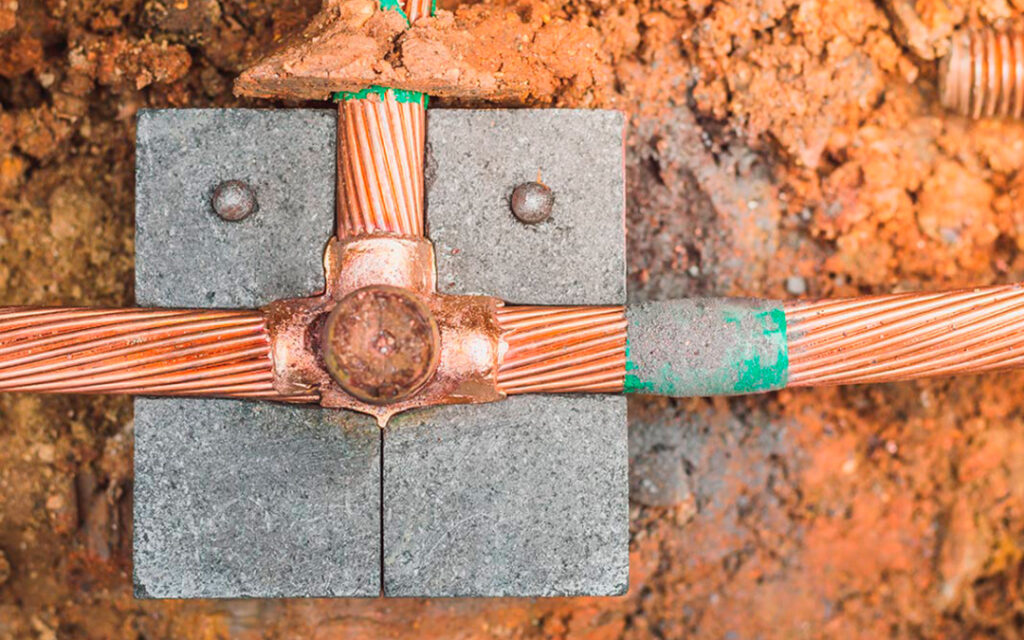The importance of grounding in lightning protection systems is a crucial issue in electrical safety. Over time, understanding of the risks associated with electricity has increased significantly, leading us to develop methods to protect both people and equipment from potential electrical hazards.
Grounding is a safety method that consists of directly connecting a part of the electrical circuit to the ground, using conductive materials. This is done so that in the event of a power failure or lightning strike, excessive current has a direct and safe path to the ground, thus minimizing the risk of electrocution or equipment damage.
The working principle of grounding is based on providing the path of least resistance for unwanted electrical currents. When connected to the ground, the grounding system dissipates these currents, preventing them from passing through the human body or sensitive electronic components. This process is based on the concept of zero electrical potential, where the electrical potential of the earth is taken as a reference. When a system is grounded, a balance is created between the electrical potential of the system and that of the surrounding earth. This means that any excess current or energy can safely flow through the grounding system to the ground itself, rather than building up and potentially causing damage or risk to people and equipment connected to the electrical system.
En el caso específico de los sistemas de protección contra rayos, la puesta a tierra es esencial. Cuando un rayo impacta una estructura protegida por un sistema de este tipo, la corriente del rayo se dirige inmediatamente hacia el suelo a través del sistema de puesta a tierra. Esto protege la estructura y sus ocupantes al evitar que la corriente del rayo fluya por caminos no deseados que podrían causar incendios o daños estructurales.
Even so, in a conventional lightning protection system, where the lightning discharges directly towards a lightning rod, and this directs the current to ground, our alternative is much safer, completely nullifying the formation of lightning. The operating principle of the CMCE is based on compensating and stabilizing the electric field existing in its environment. In this way, it prevents the formation of the lightning tracer, draining the electrical charges to the same ground system but reduced to harmless milliamps.
The evolution of grounding is the result of a combination of empirical observations and scientific advances in our understanding of electricity. With each technological discovery and improvement, grounding systems have become more sophisticated and effective, providing vital protection in our daily interaction with electricity.












